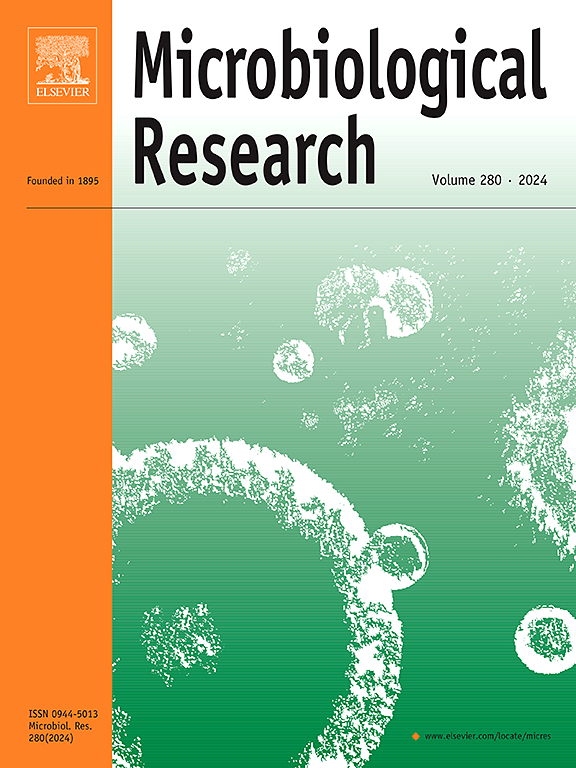Unraveling the pathogenetic overlap of Helicobacter pylori and metabolic syndrome-related Porphyromonas gingivalis: Gingipains at the crossroads and as common denominator
IF 6.9
1区 生物学
Q1 MICROBIOLOGY
引用次数: 0
Abstract
Chronic bacterial infections exert profound systemic effects beyond their primary infection sites, influencing a range of inflammatory, metabolic, and neurodegenerative diseases. Helicobacter pylori (Hp) and Porphyromonas gingivalis (Pg) are two highly prevalent pathogens that, despite occupying distinct niches, share remarkable pathogenic similarities. Both bacteria, connected with metabolic syndrome, employ immune evasion strategies, induce chronic inflammation, and contribute to systemic diseases such as metabolic-associated steatotic liver disease, cardiovascular disease, and neurodegeneration, such as Alzheimer’s disease. A key unifying factor in their pathogenicity is the role of gingipains—cysteine proteases produced by Pg—which facilitate bacterial invasion, immune modulation, and tissue destruction. Emerging evidence suggests that Hp possesses analogous proteolytic enzymes, further supporting their potential synergistic impact on host health. Moreover, both pathogens have been implicated in metabolic syndrome-related blood-brain barrier disruption, chronic (smoldering) systemic inflammation, and lipid metabolism dysregulation, contributing to progressive neurodegenerative and cardiovascular disorders. The role of galectins, particularly galectin-3, in modulating microglial activation and inflammatory pathways further highlights their involvement in neuroinflammatory diseases. Targeting gingipains presents a promising therapeutic avenue, with bismuth compounds and novel inhibitors showing potential in disrupting these proteases and mitigating their systemic effects. Understanding the interactions between Hp and metabolic syndrome-related Pg is crucial for developing comprehensive treatment strategies, integrating gastroenterology, periodontology, and neurology. Addressing these infections at both local and systemic levels may improve long-term health outcomes and reduce the burden of chronic inflammatory diseases linked to microbial persistence.
揭示幽门螺杆菌和代谢综合征相关的牙龈卟啉单胞菌的发病重叠:十字路口的牙龈疼痛和共同点
慢性细菌感染在其主要感染部位之外具有深刻的全身影响,影响一系列炎症、代谢和神经退行性疾病。幽门螺杆菌(Hp)和牙龈卟啉单胞菌(Pg)是两种高度流行的病原体,尽管占据不同的利基,但具有显着的致病性相似性。这两种细菌都与代谢综合征有关,它们采用免疫逃避策略,诱发慢性炎症,并导致全身性疾病,如代谢相关的脂肪变性肝病、心血管疾病和神经退行性疾病,如阿尔茨海默病。其致病性的一个关键统一因素是牙龈蛋白酶的作用-由pg产生的半胱氨酸蛋白酶-促进细菌入侵,免疫调节和组织破坏。新出现的证据表明,Hp具有类似的蛋白水解酶,进一步支持它们对宿主健康的潜在协同影响。此外,这两种病原体都与代谢综合征相关的血脑屏障破坏、慢性全身性炎症和脂质代谢失调有关,从而导致进行性神经退行性疾病和心血管疾病。半乳糖凝集素,特别是半乳糖凝集素-3,在调节小胶质细胞激活和炎症途径中的作用进一步强调了它们在神经炎症性疾病中的作用。针对牙龈疼痛提出了一个有前途的治疗途径,铋化合物和新的抑制剂显示出破坏这些蛋白酶和减轻其全身作用的潜力。了解Hp和代谢综合征相关Pg之间的相互作用对于制定综合治疗策略,整合胃肠病学、牙周学和神经病学至关重要。在局部和全身层面处理这些感染可能会改善长期健康结果,并减少与微生物持久性相关的慢性炎症性疾病的负担。
本文章由计算机程序翻译,如有差异,请以英文原文为准。
求助全文
约1分钟内获得全文
求助全文
来源期刊

Microbiological research
生物-微生物学
CiteScore
10.90
自引率
6.00%
发文量
249
审稿时长
29 days
期刊介绍:
Microbiological Research is devoted to publishing reports on prokaryotic and eukaryotic microorganisms such as yeasts, fungi, bacteria, archaea, and protozoa. Research on interactions between pathogenic microorganisms and their environment or hosts are also covered.
 求助内容:
求助内容: 应助结果提醒方式:
应助结果提醒方式:


